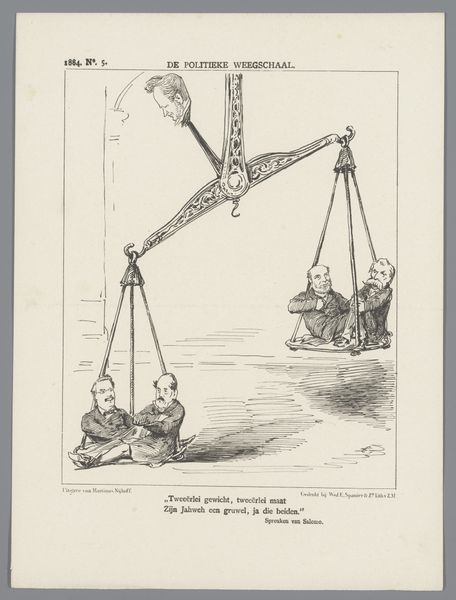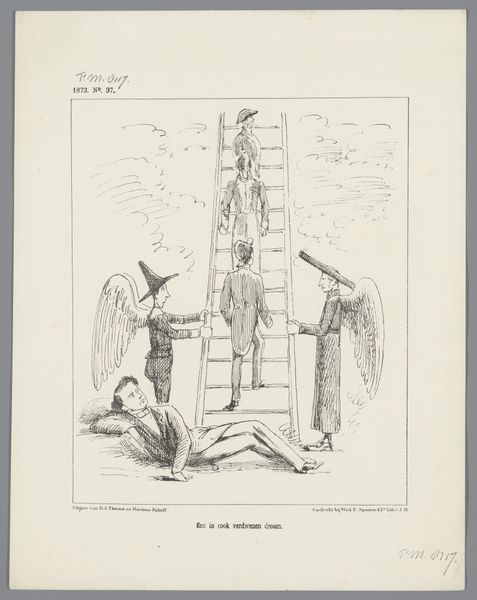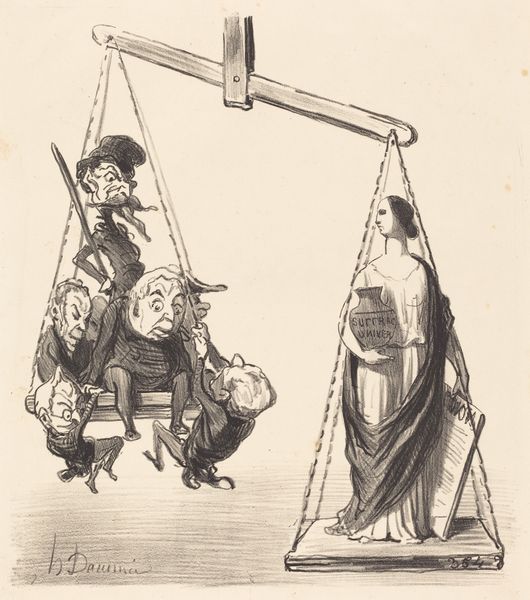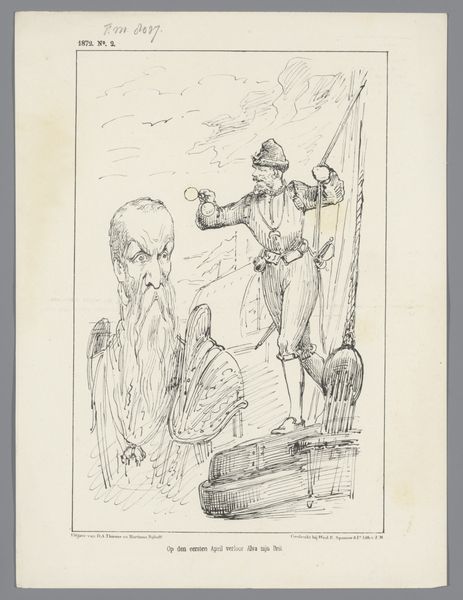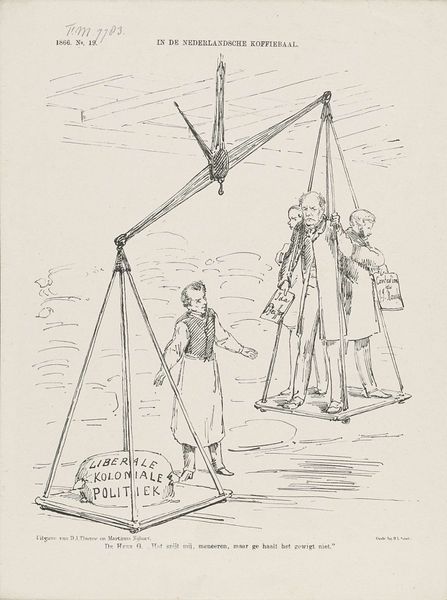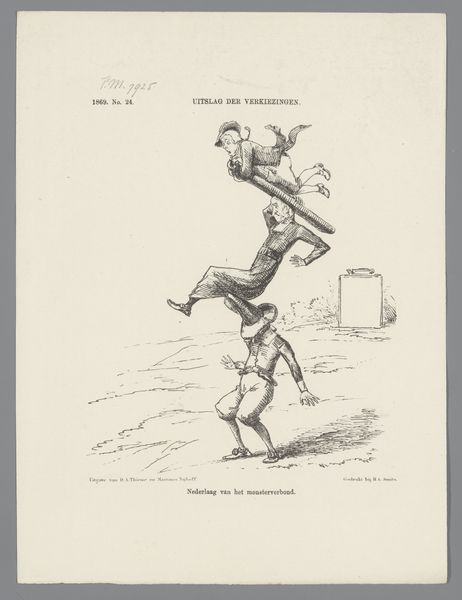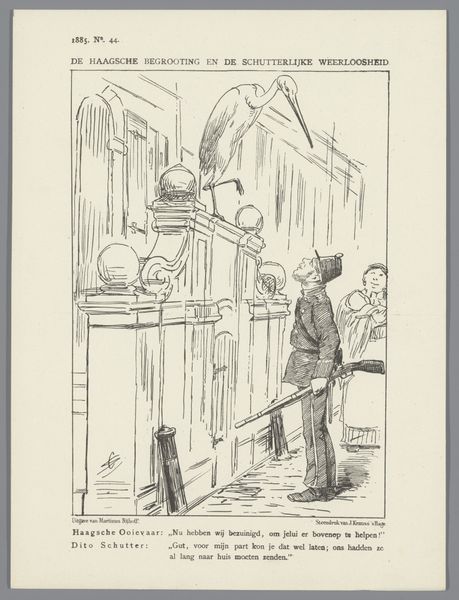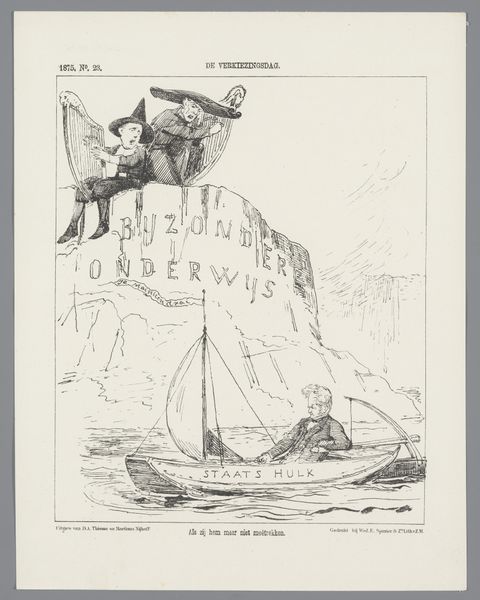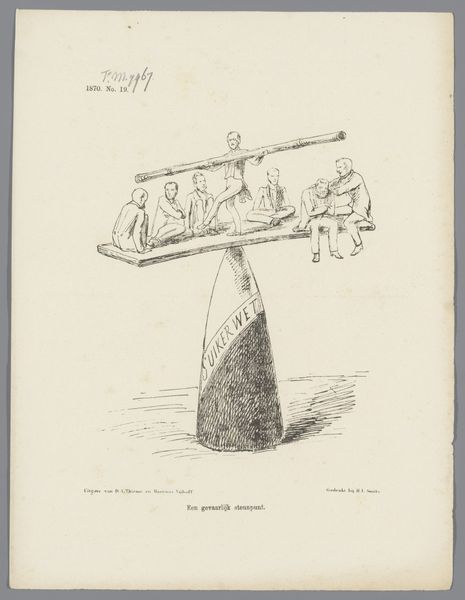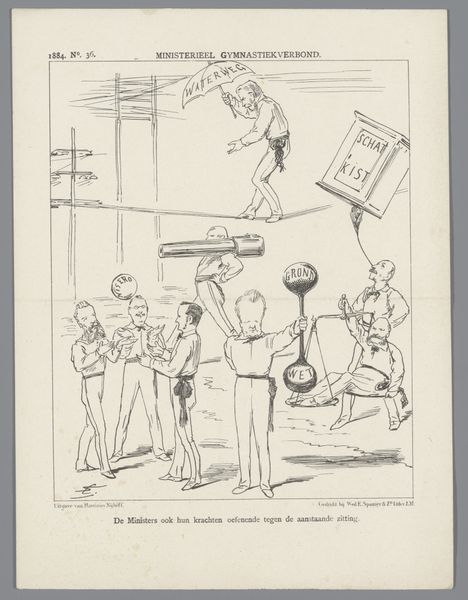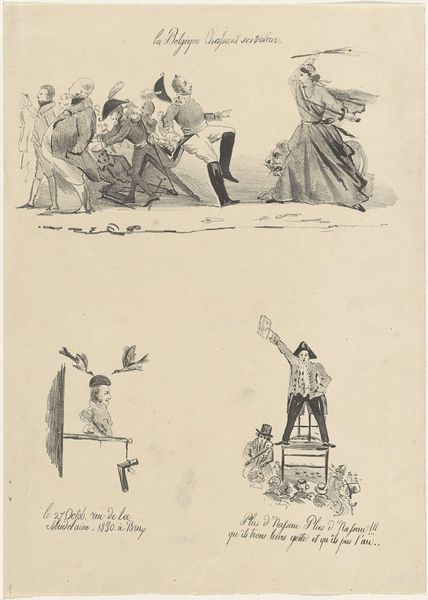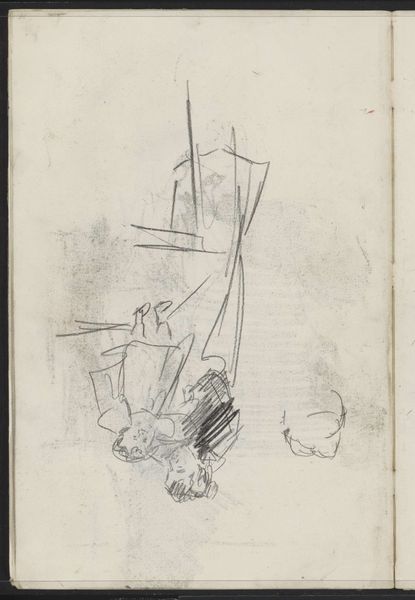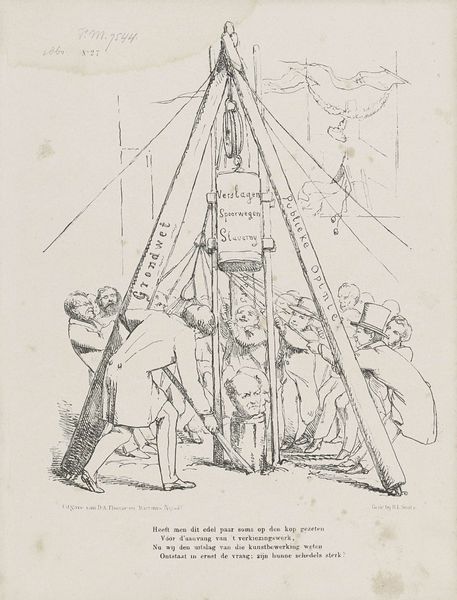
print, pen, engraving
# print
#
caricature
#
pen
#
genre-painting
#
engraving
Dimensions: height 275 mm, width 215 mm
Copyright: Rijks Museum: Open Domain
Editor: This print, "Spotprent op de uitslag van de verkiezingen, 1875" created using pen and engraving, translates to "Cartoon on the election results, 1875". It seems to be a political caricature showing a weighing scale. What do you see as particularly insightful about the historical context here? Curator: The use of a weighing scale in 1875 reflects anxieties surrounding democratic representation at the time. Caricatures like these played a vital public role, influencing opinion, so how it used language and image to persuade its viewers matters. How do the composition and symbols portray this persuasive intention? Editor: I see a small group of figures on one side of the scale weighed down by "Arnhem" label, while only a few figures weigh down the other side. At the top is a person at the scales balance beam that maybe dictates the results. It seems that the figures on one side outweighed by the other. It really gives the feel of how votes or popularity can sway political power. But why the Arnhem label? Curator: Indeed. "Arnhem" probably represents a specific electorate or political faction in the Netherlands. It reveals how localized interests shaped broader political dynamics. Are there details in the figure's faces, poses and groupings that appear repeatedly within a socio-political context from that period? Editor: Well, all the figures look rather stereotyped. The artist doesn’t appear interested in celebrating the Arnhem electorate with the scale weighed in the other side. It is critical of these results with body language, clothing and setting creating a commentary on the political theater that you had referred. Curator: Precisely. These stereotypical portrayals speak volumes about the artist's bias and how political discourse functioned at the time. Do you think the limited circulation of prints like these confined their social influence, or did word-of-mouth contribute to wider public debate? Editor: While mass media didn’t exist as we know it now, engravings allowed images to be replicated. This work serves as evidence for how impactful satirical, visual messaging about democracy and social class. Thanks! I feel much more prepared. Curator: It's fascinating how something seemingly simple embodies so many historical and political layers. It helps us better grasp both intended meanings and receptions within public discourse.
Comments
No comments
Be the first to comment and join the conversation on the ultimate creative platform.
